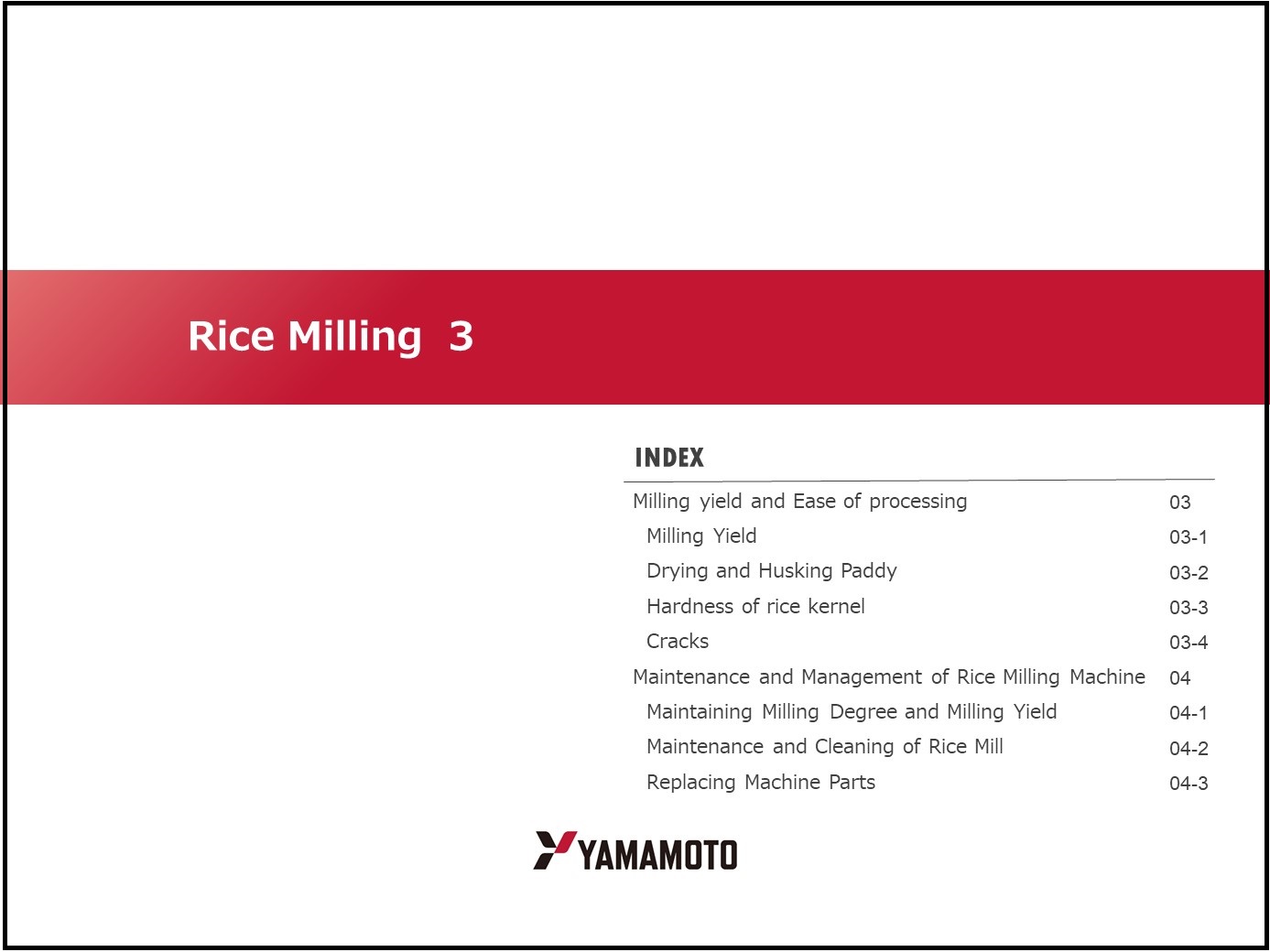44. Rice Milling 3
- INDEX -
Milling yield and Ease of processing
Milling Yield
Drying and Husking Paddy
Hardness of rice kernel
Cracks
Maintenance and Management of Rice Milling Machine
Maintaining Milling Degree and Milling Yield
Maintenance and Cleaning of Rice Mill
Replacing Machine Parts
Milling yield and Ease of processing
Milling Yield
Japanese rice has a relatively round shape and is strong. So it is rarely deformed/ Conversely, long grains tend to be deformed and broken easily. Tha main causes of breakage being generated during rice polishing are deformation due to the bending moment in a friction mill and impact force in an abrasive machine with lower pressure. In the case of long grains, head rice is defined as rice grains without chipped portion (whole kernel) and rice grains that are 75% of the length or more the lenght of whole kernel. Broken rice is thus defined as grains less than 75% of the length of whole kernel. The milling yield or recovery rate of milled rice is the ratio of the weight of milled rice that has been dried, husked and polished to acceptable whiteness to the weight of dried paddy.
This varies by varieties of rice, drying and separation conditions of paddy, and rice milling machines used. Appropriate standards for rice polishing differ by country. As a result, the milling yield cannot be compared simply. The milling yield from Japanese paddy is 72% and that from long grains is about 65% (55~67%).
The revovered milled rice contains not only head rice but also brokens. Removing the broken rice from milled rice, only the head rice is obtained. Head rice is defined not only by shape but also by quality.
